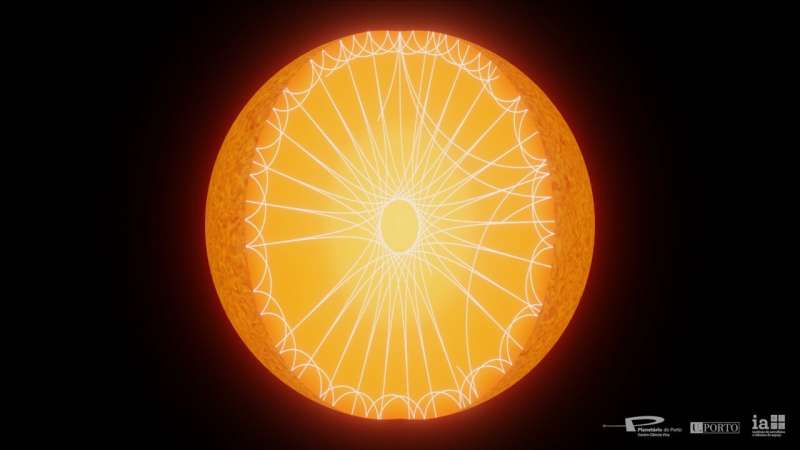In the vast expanse of the cosmos, scientists continuously seek to unravel the mysteries of the universe. Recently, an international team of researchers led by the Instituto de Astrofísica e Ciências do Espaço (IA) achieved a groundbreaking feat by detecting the smallest “starquakes” ever recorded. Using innovative techniques and cutting-edge technology, they delved into the depths of an orange dwarf star named Epsilon shedding light on its inner workings and opening new avenues for exploration in astrophysics.
Exploring the Depths of Epsilon Indi: Situated at a distance of 11.9 light years from Earth, Epsilon Indi is an orange dwarf star that holds immense significance in the realm of celestial exploration. With 71% of the sun’s diameter, this enigmatic star provided researchers with a unique opportunity to study its oscillations using a technique known as asteroseismology. Similar to how earthquakes unveil the Earth’s interior, these “starquakes” offer glimpses into the inner layers of stars, enabling scientists to unlock a treasure trove of knowledge about their composition and behavior.
A Technological Triumph: The success of this endeavor lies in the remarkable precision achieved by the researchers. Employing the ESPRESSO spectrograph mounted at the European Southern Observatory’s Very Large Telescope (VLT), the team detected oscillations in Epsilon Indi with a peak amplitude of just 2.6 centimeters per second. To put this into perspective, the measured speed is slower than the average pace of a sloth—a testament to the extraordinary technological advancements in observational astrophysics.
Pushing the Boundaries of Knowledge: The significance of this discovery extends far beyond the realm of Epsilon Indi. By studying these minute oscillations, scientists aim to address longstanding discrepancies between theoretical models and empirical observations of cool-dwarf stars. The newfound insights gleaned from asteroseismology pave the way for refining existing stellar evolution models and enhancing our understanding of the universe’s intricate mechanisms.
Implications for Future Exploration: The implications of this breakthrough resonate across the cosmos. Not only does it offer invaluable insights into the complex physics governing stars like Epsilon Indi, but it also holds promise for the future European Space Agency’s PLATO space telescope mission. By converting oscillation amplitudes into photometric data, researchers can harness this information to predict the seismic activity of distant stars accurately.
As humanity embarks on a journey of cosmic exploration, each discovery brings us closer to unraveling the universe’s deepest secrets. The detection of “starquakes” in Epsilon Indi marks a pivotal moment in our quest for knowledge, illuminating the path toward new frontiers in astrophysics. With the combined efforts of visionary researchers and groundbreaking technology, we stand poised to unlock the mysteries of the cosmos and chart the course for humanity’s cosmic destiny.
